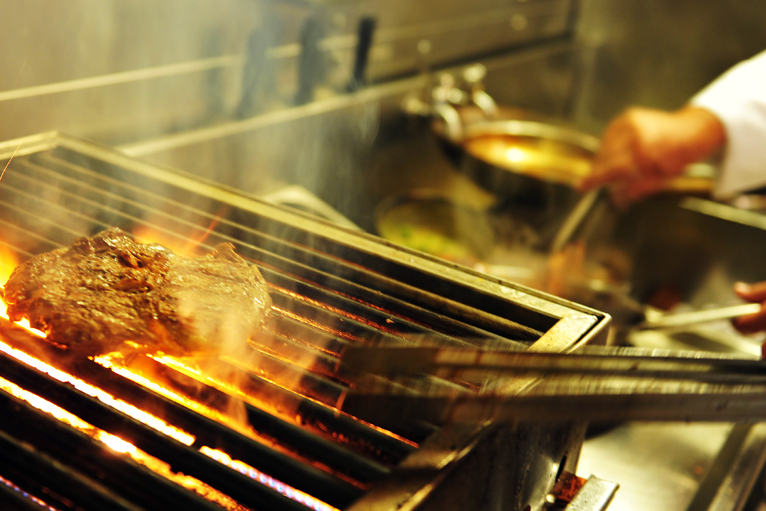Your Comprehensive Guide for Kitchen Ventilation Design of Solid Fuel Cooking.
Of all the commercial kitchen ventilation designs, solid fuel cooking presents some significant challenges. The design should consider not only source capture, but mitigation of fire risk and system maintenance when designing. Several important factors must be considered.
Here are some key points to keep in mind for Solid Fuel Cooking Ventilation:
- Safety Regulations: Familiarize yourself with local safety regulations and codes for kitchen ventilation systems. These regulations may specify requirements for solid fuel cooking equipment and ventilation systems to ensure proper air quality and fire safety. Chapter 14 of NFPA 96 is dedicated to the requirements of a compliant solid fuel installation and should be referred to in when designing such systems.
- Exhaust Hood Size: Determine the appropriate size and capacity of the exhaust hood based on the type and size of the solid fuel cooking equipment. The hood should effectively capture and remove smoke, fumes, and particulate matter generated during cooking. The exhaust hood should also be rated for solid fuel applications. Not all exhaust hoods are listed for solid fuel applications
- Hood Placement: Proper placement of the exhaust hood is crucial. It should be located directly above the solid fuel cooking equipment to effectively capture the smoke and fumes. Positioning the hood too far away or at an incorrect angle may result in inadequate ventilation.
- Capture and Containment: The exhaust hood should be designed to effectively capture and contain the byproducts of solid fuel cooking. This may include smoke, grease, soot, and other airborne particulates. Consider the shape, size, and position of the hood and the use of high efficiency spark arrestor filters or other appropriate filtration systems to help capture and remove these contaminants. Typically the grease filter is part of the listed hood.
- Airflow and Ventilation Rate: Ensure that the ventilation system provides adequate airflow and ventilation rate to effectively remove the byproducts of solid fuel cooking. The manufacturer will guide you on the proper exhaust volume. Solid Fuel applications do not use variable volume controls since the heat source never goes away unless it is extinguished. Exhaust rates for solid fuel are higher than traditional appliances due to the level of heat and intensity of the cooking operation. Supply or make up air should be carefully considered to ensure proper space balance and not to interfere with the thermal plume generated by the cooking operations.
- Fire Suppression: Solid fuel cooking poses a higher risk of fire due to the presence of open flames and hot embers. Consider integrating fire suppression systems, such as automatic fire extinguishers or fire suppression hoods, into the kitchen ventilation design to mitigate fire hazards. Additional details may be found in Chapter 14 of NFPA 96.
- Maintenance and Cleaning: Develop a maintenance plan for the ventilation system, including regular cleaning and inspection of the exhaust hood, filters, exhaust ducts, and fans. Solid fuel cooking can create more grease and soot buildup than other cooking methods, so proper cleaning and maintenance are essential for safe and efficient operation.
- Professional Assistance: It is highly recommended to consult with a professional ventilation engineer or a kitchen hood specialist experienced in designing ventilation systems for solid fuel cooking. They can provide expertise and guidance tailored to your specific requirements and local regulations.
Remember to always prioritize safety and compliance when designing kitchen ventilation for solid fuel cooking.
If you are interested in further information on how to design your kitchen ventilation system for solid fuel, the experts who manufacture your equipment and appliances can guide you on the proper selections needed to meet this requirement.
Our recommended next article would be: What are Best Practice Recommendation and Requirements for Solid Fuel Cooking in Kitchen Ventilation
Subscribe to kitchenventilation.com
Stay up to date by subscribing to Halton’s Commercial Kitchen Ventilation Blogs by entering your email address to subscribe and Halton will provide you with the latest information on commercial kitchen exhaust hoods, pollution control units, air handling, and safety systems. You will receive notifications of new posts by email.

